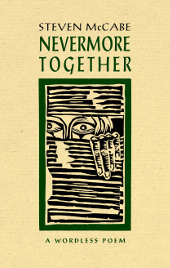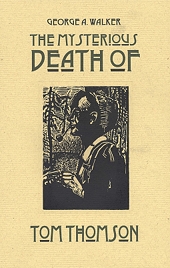The Porcupine's Quill
Celebrating forty years on the Main Street
of Erin Village, Wellington County
Instructor Resources
The Wordless Novel
in the Classroom
A Guide by Steven McCabe
Use the Wordless Novels Series to foster creative literacy and to explore visual forms of storytelling and meaning-making.
What Is a Wordless Novel?
Wordless ‘books’ (narrative texts in a variety of formats) have been with us since the earliest days. Some examples include:
- Cave paintings, on the ‘page’ of the wall, performed a variety of magic and autobiographical functions in ancient society.
- Neolithic symbols, carved in stone, comprised a universal language spanning the globe.
- Petroglyphs and pictograms from a wide variety of cultures, freely accessible to any wayfarer, communicated wordlessly.
- Church murals, mosaics, and stained glass ‘spoke:’ reinforcing social narratives.
In the 1920s and 30s, artists such as Frans Masereel and Lynd Ward pioneered the wordless book in woodcut and linocut form exploring political and social themes.
The PQL Wordless Novels series presents a vivid multitude of styles and forms easily adaptable for teaching creative literacy.
Why Teach Wordless Novels?
The wordless novel speaks with an expressive and unique vocabulary that helps to engage reluctant students with language. Not only is the reluctant student ‘reading’ the visual phenomena of the page, he or she is also ‘writing’ a story in both anticipation and response.
We see four actions in process addressing the criteria of creative literacy:
- Becoming an engaged learner
- Developing communication skills
- Solving problems creatively
- Using language
Building a Bridge:
Students evaluate the observable world by noticing and deducing. What they see generates an emotion or thought in response. Something as simple as walking down the street plays out a thousand movies in the mind. Translating this to pen and paper or keyboard and memory stick requires a bridge from the stages of natural occurrence to a remembered and considered sequence.
Connecting Experience to Language:
The images in a wordless book can speak to the student’s personal, verifiable experience in the same way as walking home from school provides imagery to interpret. For example: Imagine telling students they forgot the poem they wrote yesterday. They may give you a puzzled look. And yet the student might recall, given the opportunity to focus, observing a blade of grass bent sharply over, in the shadow of a passing bird, while brushing a bee from her face. The student now remembers: Green grass folded, a shadow falling softly, a quick bee buzzing. The bridge to creative expression is formed. The student has connected experience with language. She situates herself within a visual narrative by interpreting the imagery and building upon the experience.
Engaging With a Narrative Context:
Working with a developed sequence of visual images to facilitate creative expression is different than, for example, cutting a photograph out of a magazine as a jumping off point for story.
In wordless books, a narrative context (a story set over time) is already at play. Students enter this dynamic through imaginative possibilities expressed with language:
- Using basic language skills (adjectives, verbs, nouns)
- Imagining and developing a story structure (plot, setting, protagonist/antagonist, etc.)
- Distilling the lyrical essence (haiku or free verse poetry)
Two outlines for lesson plans follow utilizing very different types of visual narrative demonstrating the wide variety of approaches possible with the wordless book.
Lessons
The Porcupine's Quill would like to acknowledge the support of the Ontario Arts Council and the Canada Council for the Arts for our publishing program. The financial support of the Government of Canada through the Canada Book Fund (CBF) is also gratefully acknowledged.

